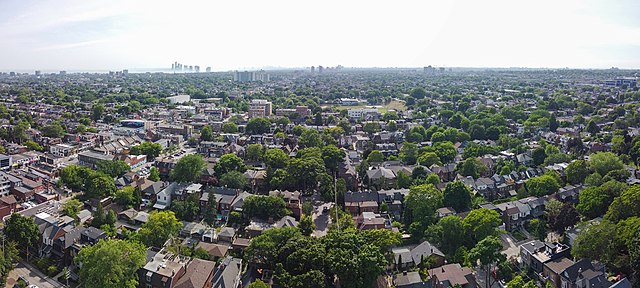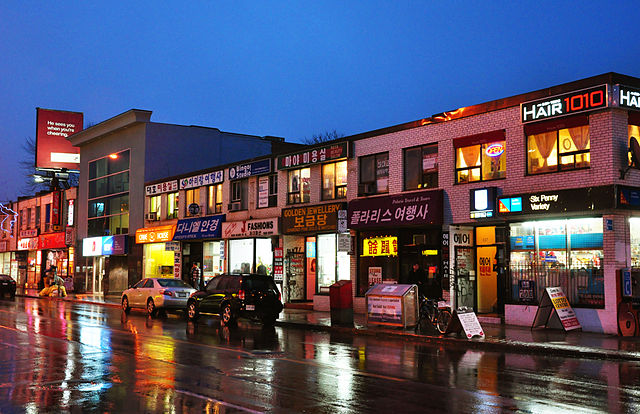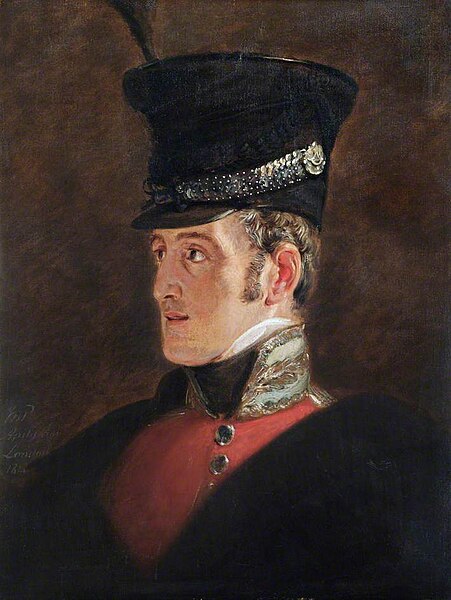Seaton Village is a neighbourhood and former village located west of Downtown Toronto in Toronto, Ontario, Canada. It is named after John Colborne, 1st Baron Seaton, Lieutenant-Governor of Upper Canada from 1828 to 1836. Bloor Street borders Seaton Village to the south, the Canadian Pacific Railway tracks to the north, Christie Street to the west, and Bathurst Street to the east. Officially, it is an enclave within The Annex neighbourhood, as defined by the City of Toronto. It is sometimes referred to as the West Annex. While Seaton Village shares several characteristics with the Annex, it is often perceived as a quieter, family-oriented neighbourhood. The Koreatown shopping district is at its southern border.
Aerial view of Seaton Village in 2022
The Palmerston branch of the Toronto Public Library in Seaton Village
The ethnic enclave of Koreatown is located on Seaton Village's southern boundary, at Bloor Street.
John Colborne, 1st Baron Seaton
Field Marshal John Colborne, 1st Baron Seaton, was a British Army officer and colonial governor. After taking part as a junior officer in the Anglo-Russian invasion of Holland, Sir Ralph Abercromby's expedition to Egypt and then the War of the Third Coalition, he served as military secretary to Sir John Moore at the Battle of Corunna. He then commanded the 2nd Battalion of the 66th Regiment of Foot and, later, the 52nd Regiment of Foot at many of the battles of the Peninsular War. At the Battle of Waterloo, Colborne on his own initiative brought the 52nd Regiment of Foot forward, took up a flanking position in relation to the French Imperial Guard and then, after firing repeated volleys into their flank, charged at the Guard so driving them back in disorder.
Colborne in 1821, by Jan Willem Pieneman
Destruction of Colborne's brigade during the Battle of Albuera, painted by William Barnes Wollen.
Colborne's troops attack the insurgents and torch the church at the Battle of Saint-Eustache
Bronze statue of John Colborne, sculpted by George Gammon Adams, now at Peninsula Barracks in Winchester, originally erected at Mount Wise, Plymouth in 1866.







